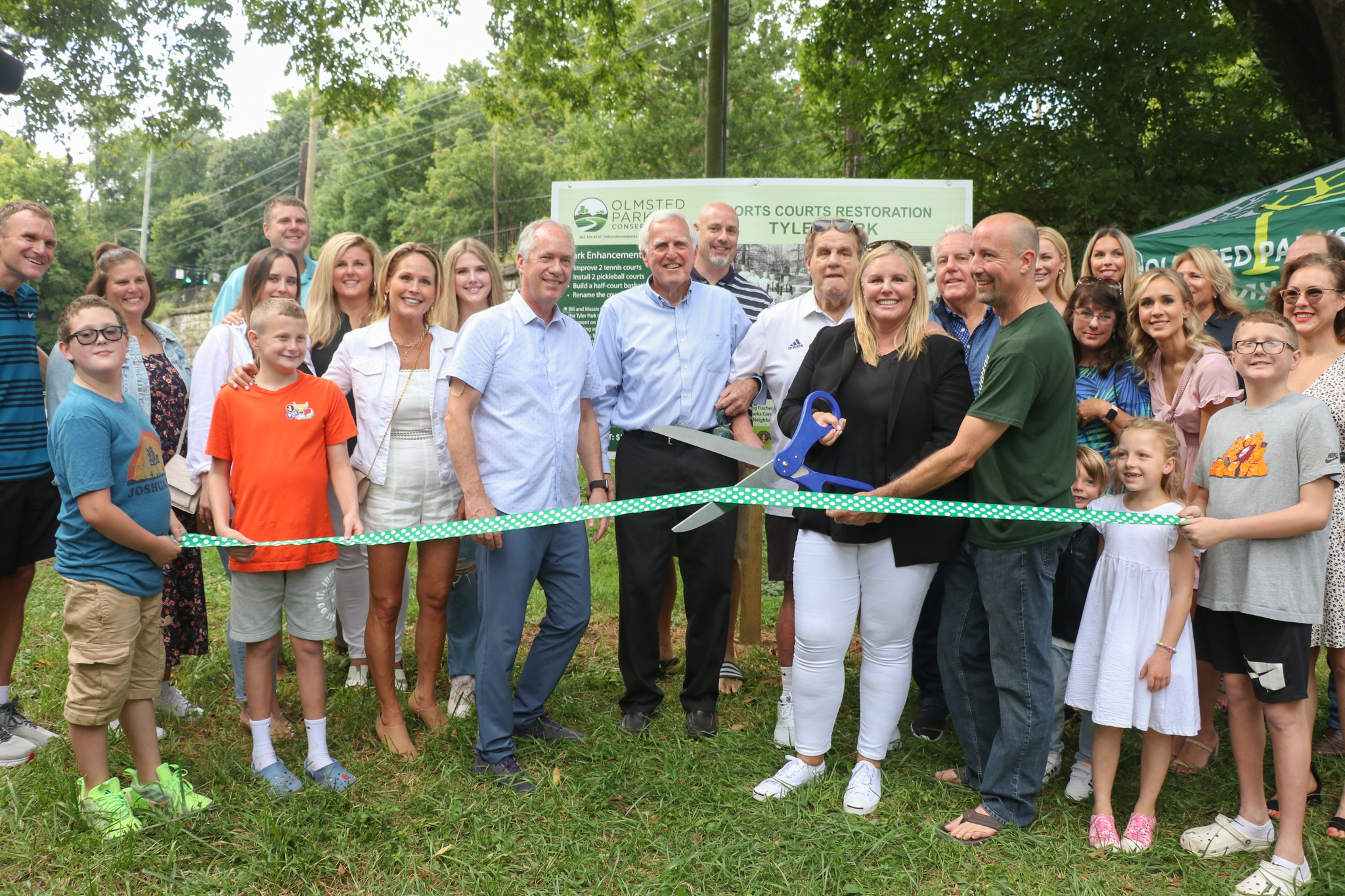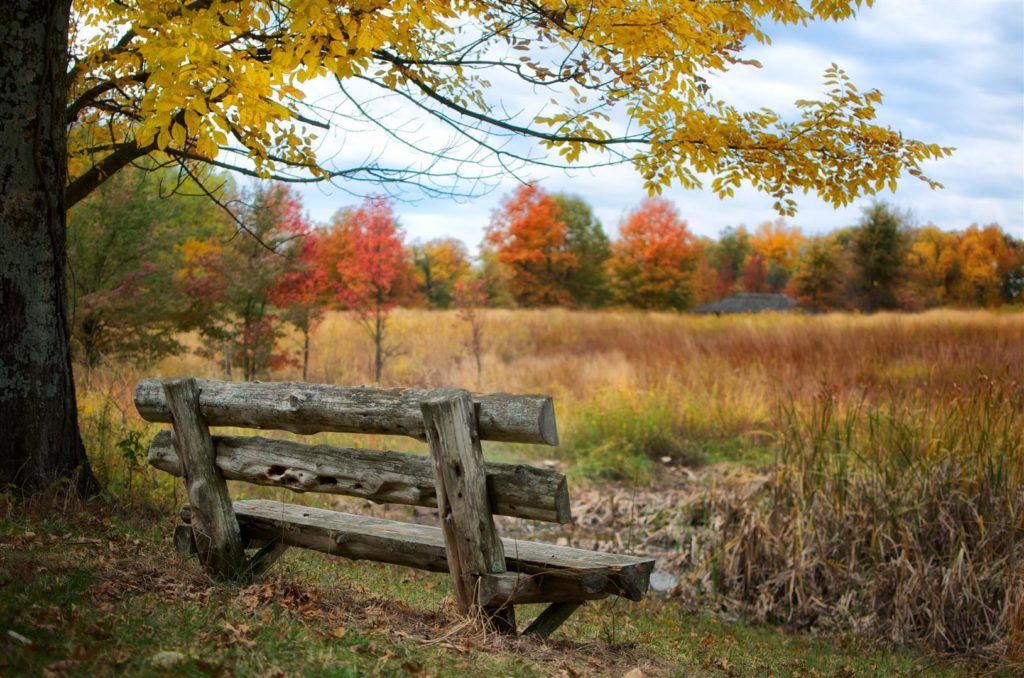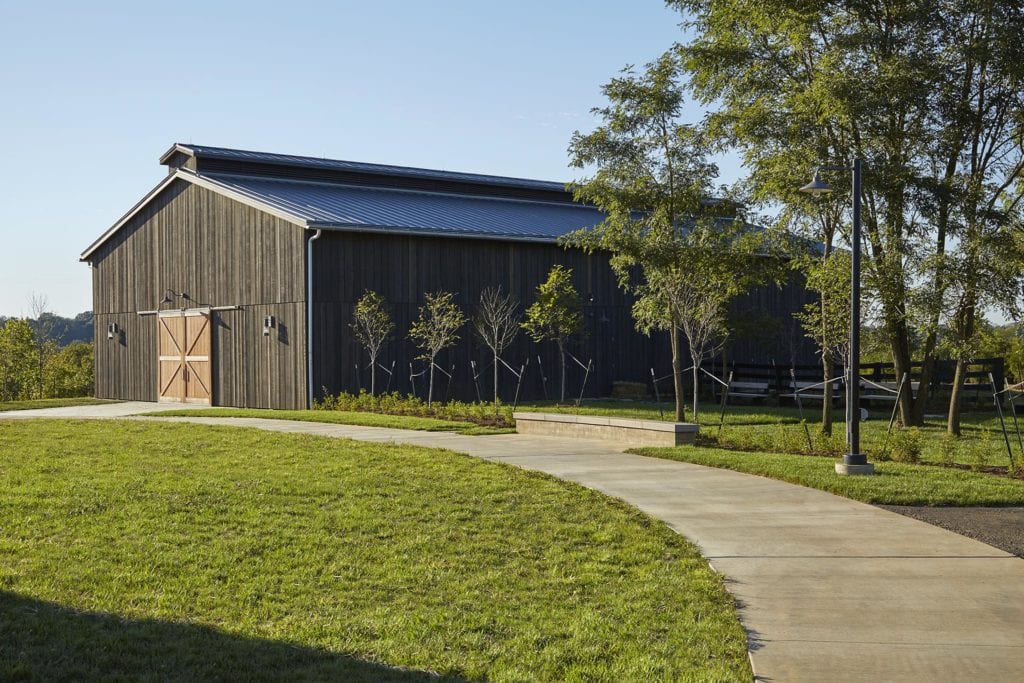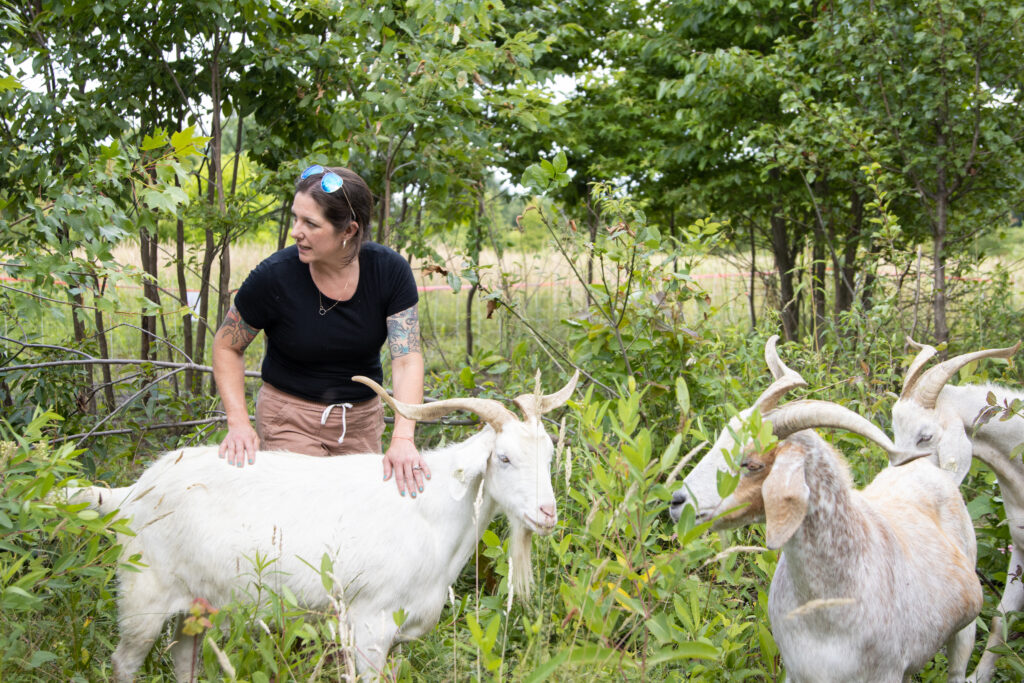
Visitors to Louisville, Kentucky’s Iroquois Park may have noticed something new in the last few weeks— a small herd of goats grazing in Summit Field! How did the goats get there? They are part of a land management study conducted by Olmsted Parks Conservancy (OPC) in partnership with Kentucky State University (KSU).
Iroquois Park is one of 17 historic parks in Louisville designed by Federick Law Olmsted and the Olmsted firm. Olmsted Parks Conservancy is the nonprofit partner to Louisville Parks and Recreation, spearheading park projects, community engagement, stewardship and advocacy for the Olmsted Park System. Iroquois Park has a unique prairie ecosystem, but it is under threat from invasive plants. Working with KSU, OPC is assessing three options for managing the area: large machinery like forestry mulchers, working with hand tools, and goat grazing. To evaluate these methods, researchers collected baseline data via drone flyover. Each of the three methods will be completed in a one-acre section of the treatment area, and a second drone flyover will be completed in the fall to assess the results. The goats will soon be moved out of Iroquois Park as OPC and KSU advance to the next phase of the land management study.
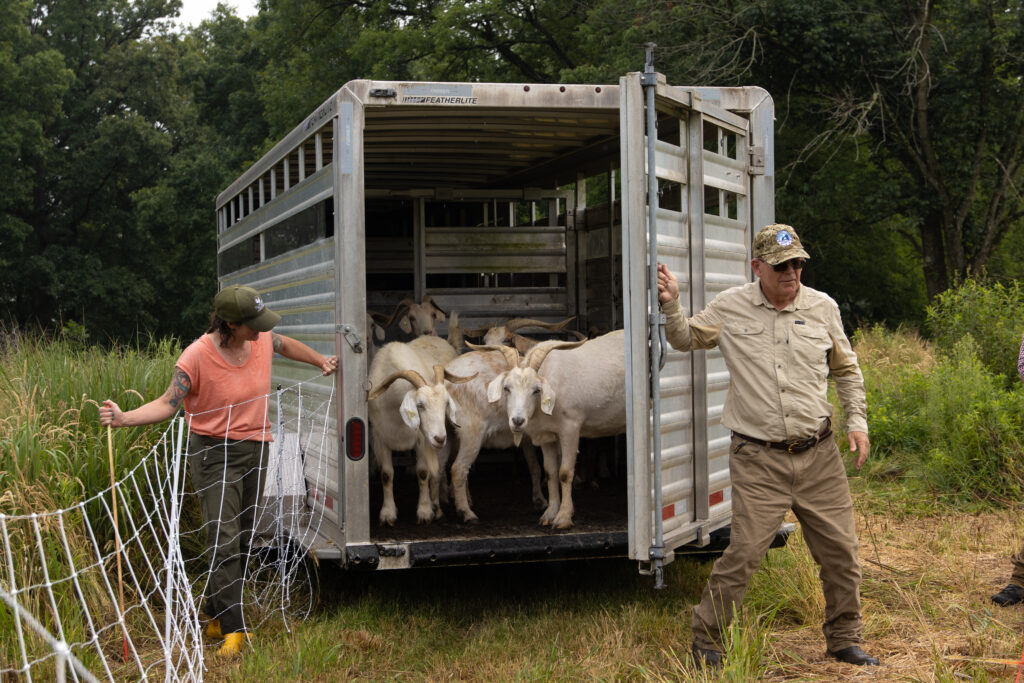
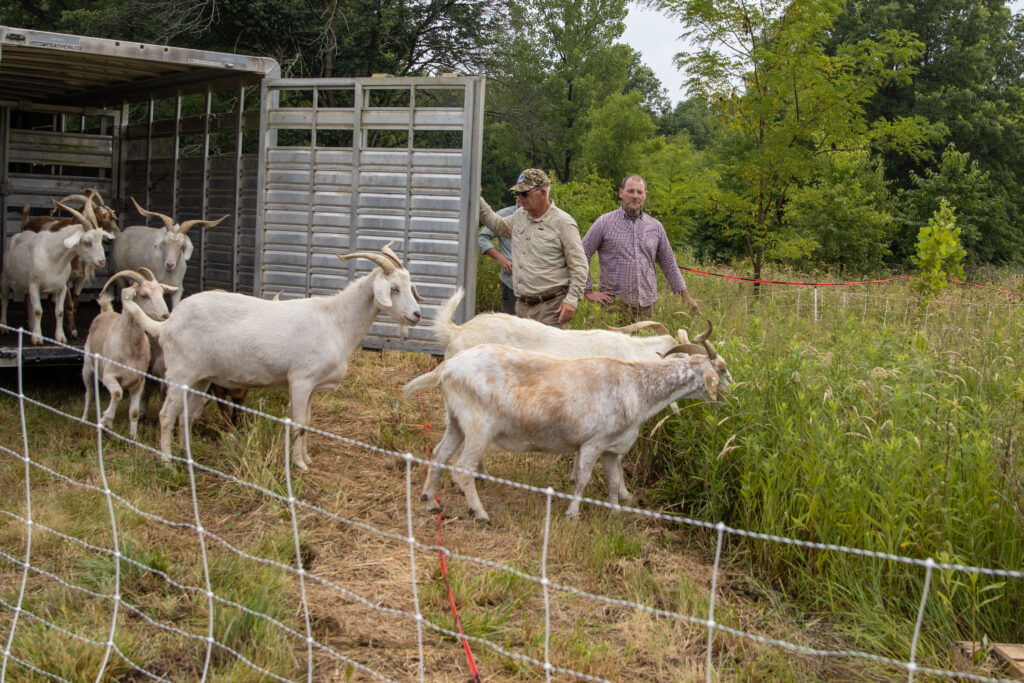
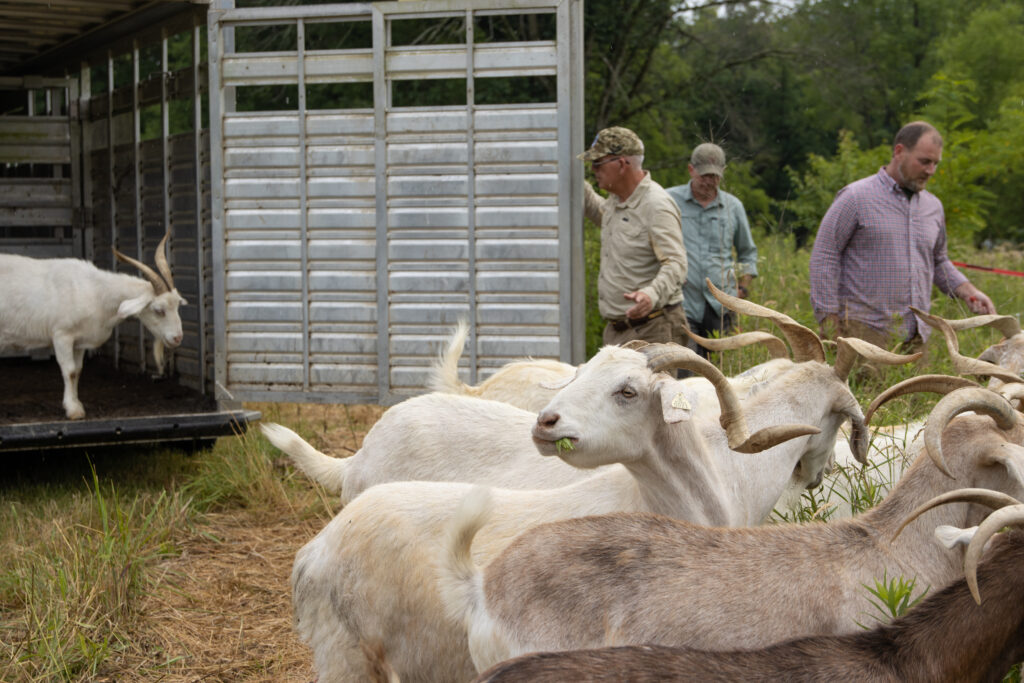
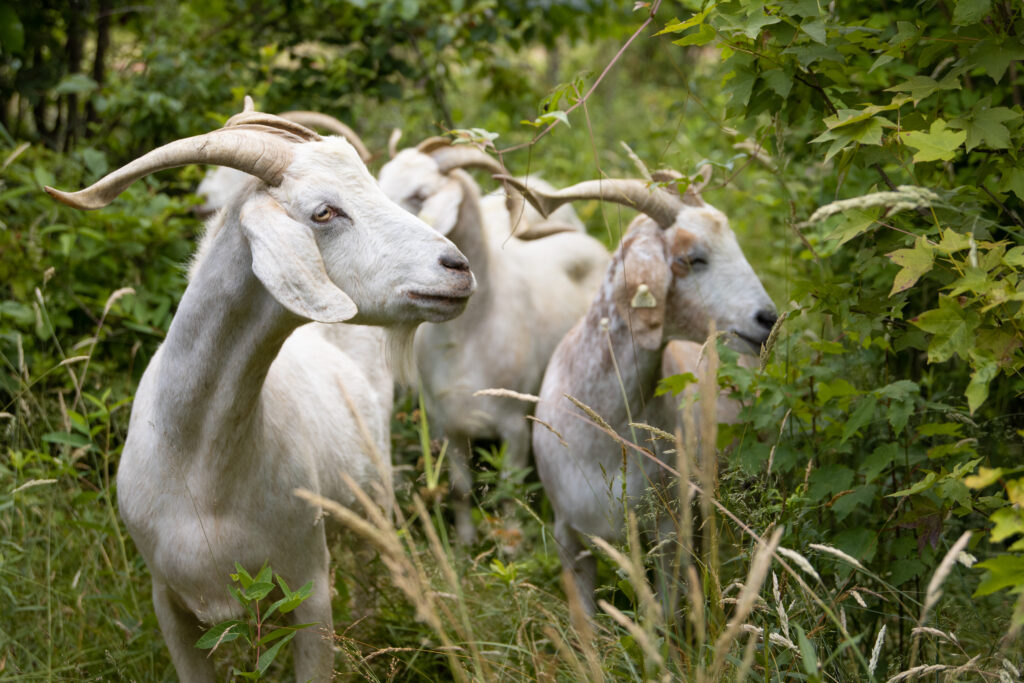
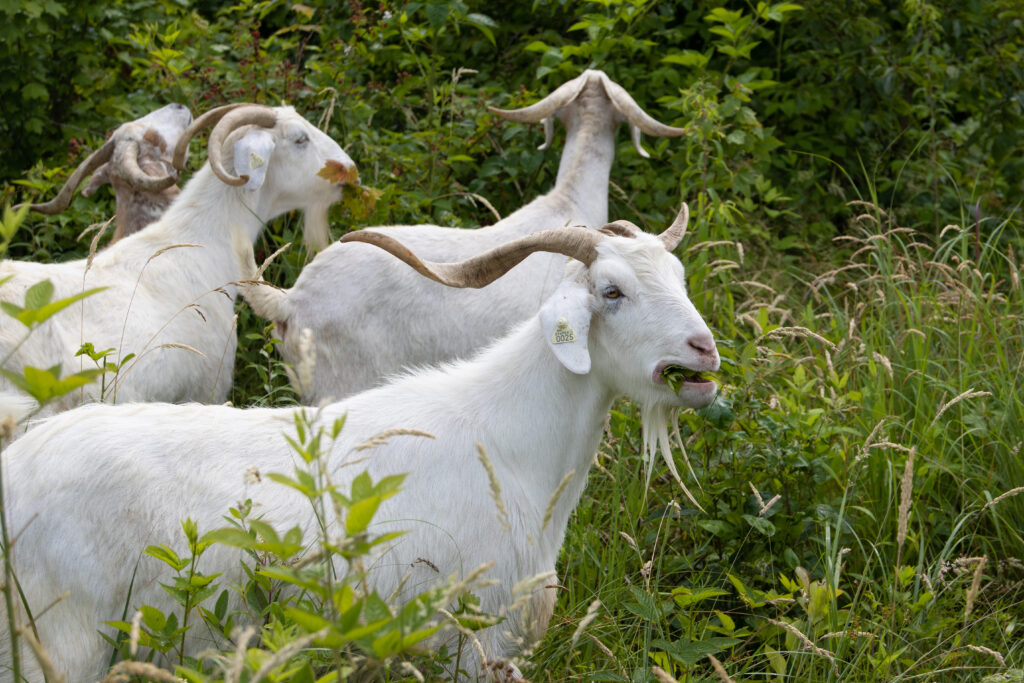
“The goats went straight to work, eating invasive plants in the prairie and making space for native flora to grow! Iroquois Park’s Summit Field supports a variety of pollinator species that keep our parks healthy and vibrant. Olmsted Parks Conservancy’s partnership with Kentucky State University will help us optimize our work creating sustainability in urban green spaces while supporting the University’s research.” -OPC Project Manager Liz Winlock
Invasive plant management is a major part of Olmsted Parks Conservancy’s work. In Iroquois Park, this includes removing woody species from the Summit Field prairie. In other parks like Cherokee Park, OPC removes plants like honeysuckle and fig buttercup. This work allows native plants to thrive, which in turn supports pollinators, a healthy ecosystem, and sustainable urban greenspaces throughout Louisville.









